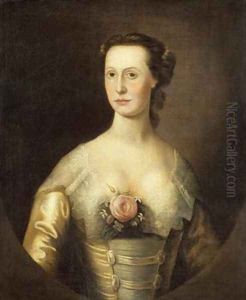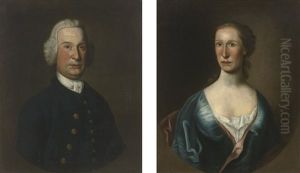Thomas McIlworth Paintings
Thomas McIlworth was an 18th-century painter of Scottish origin. Little is known about his early life or training. It is believed he was born around the year 1720, although the exact date and place of his birth are not well documented. McIlworth is primarily known for his work in colonial America, where he was active as a portrait painter.
McIlworth's career in America began in the 1750s when he immigrated to the colonies from Scotland. During this period, he traveled extensively along the East Coast, particularly in New York. In 1757, he advertised his services in the New York Mercury, which is one of the few documented evidences of his presence in America. His clientele were primarily wealthy and influential figures of the time, indicating his reputation as a skilled portraitist.
The style of Thomas McIlworth's portraits was influenced by the European grand manner of portrait painting. His work exhibited a strong understanding of form and composition, with a particular talent for capturing the likeness and character of his sitters. His portraits are characterized by a certain rigidity and formality, a common trait in colonial portraiture, which was influenced by the prevailing artistic norms of the period.
Unfortunately, McIlworth's career was relatively short-lived. He died in 1769, and as a result, his body of work is not as extensive as some of his contemporaries. Despite this, his paintings are considered important historical documents, providing insights into the identity and social status of colonial Americans. His portraits have been preserved in various historical societies and museums, where they continue to be studied and admired for their contribution to early American art.
Thomas McIlworth's legacy is that of a skilled portraitist who captured the faces of colonial America. While not as widely known as some of his peers, his work remains a valuable part of the history of American art, reflecting the cultural and social milieu of his time.

